After many years of challenging its R&D, Panasonic announces it has developed its anticipated organic CMOS technology to achieve “Excellent Color Reproducibility under Any Light Source Irradiation”. All the details are below.
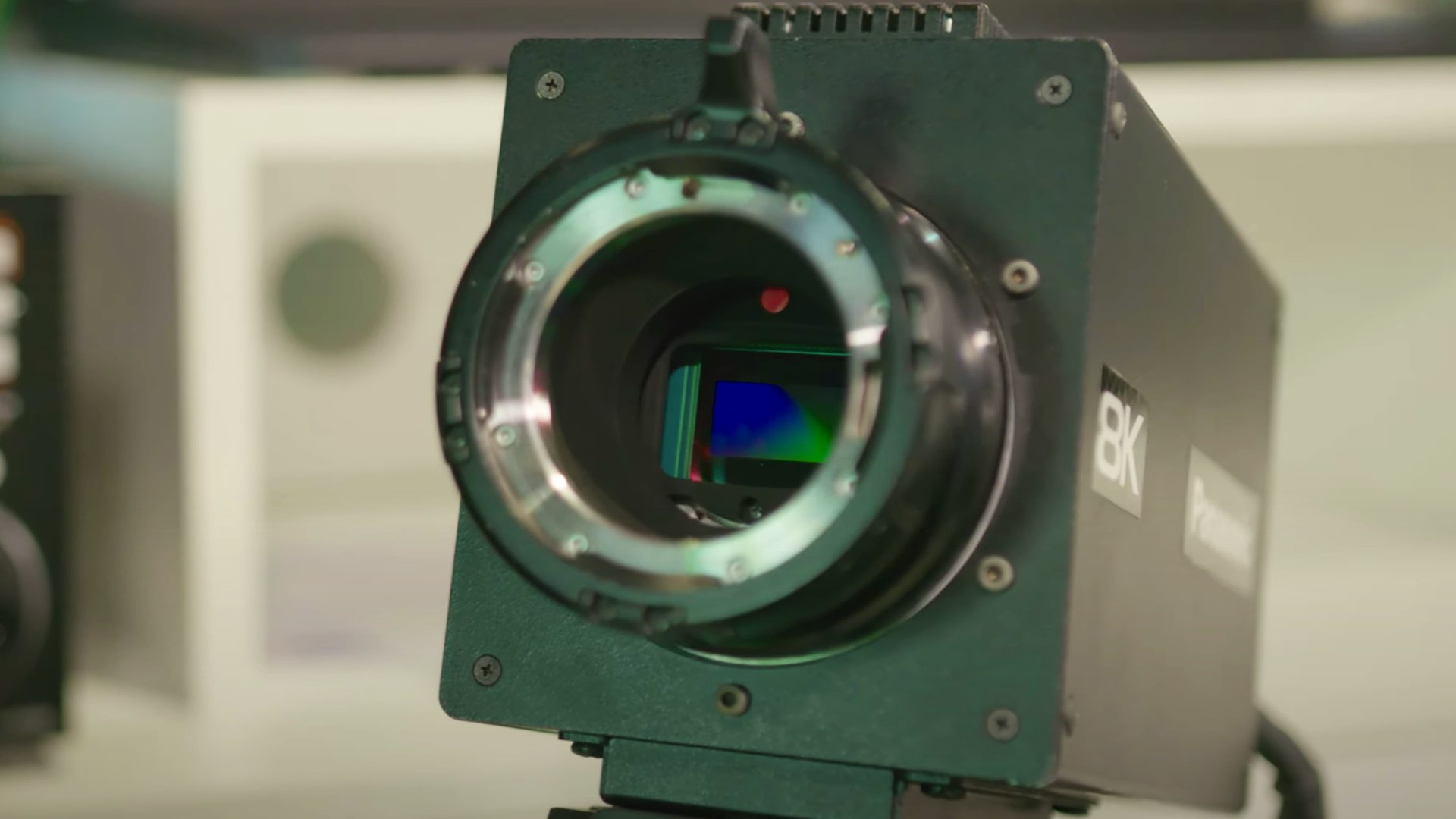
Panasonic 8K Organic sensor technology
In November 2021, we reported about Panasonic 8K prototype camera with a new 35MP S35 8K organic sensor, spotted at the 4K/8K Technology Expo 2021 in Makuhari Messe, Chiba, Japan. At that time, Panasonic stated that it would take some time to manufacture an 8K consumer camera with this organic sensor. The project began in 2013 in a partnership with Fujifilm, with the ambitious goal to develop an organic sensor. As stated back then by a senior executive in the Technology Division (R&D Division), Panasonic Corporation: “We have developed a CMOS image sensor with an organic photoconductive film (OPF) laminated on pixel circuits, different from those of a conventional silicon image sensors, in which the organic thin film for photoelectric conversion and the charge storage part for signal charge accumulation are completely independent. The advantages of the OPF image sensor are significant. This technology realizes over 120 dB simultaneous-capture wide dynamic range, global shutter, and high saturation signals per unit square that is 10 dB higher than that of silicon image sensors with the global shutter function, without sacrificing pixel area. Moreover, we introduce about 8K4K high-resolution sensor technologies with a 60fps high frame rate. We believe these features of the OPF image sensor will contribute to leaps in the imaging and sensing fields”. Moreover, Panasonic has released a picture demonstrating the sensor’s high dynamic range. However, Panasonic emphasized that a working production model isn’t on the horizon, and further R&D is needed. Nevertheless, a brand new press release published by Panasonic sheds a lot more light on that matter.

Breakthrough on development
Now it seems that Panasonic presents a significant breakthrough in developing the 8K organic sensor, backing it up with a brand new press release (we found the English version), titled: “Panasonic Develops Organic Photoconductive Film (OPF) CMOS Image Sensor Technology That Achieves Excellent Color Reproducibility under Any Light Source Irradiation”. As stated by Panasonic: “Panasonic Holdings Corporation announced that it has developed excellent color reproduction technology that suppresses color crosstalk by thinning the photoelectric conversion layer using the high light absorption rate of the Organic Photoconductive File (OPF) and by using electrical pixel separation technology. In this technology, the OPF part that performs the photoelectric conversion and the circuit part that stores and readouts the electric charge are completely independent. This unique layered structure dramatically reduces the sensitivity of each pixel in green, red, and blue in wavelength regions outside the target range. As a result, color crosstalk is reduced, excellent spectral characteristics are obtained, and accurate color reproduction is made possible regardless of the type of light source”. Let’s filter all that nerd talk to come to the conclusion that this organic sensor is characterized by a high level of color accuracy. And that is a good thing. Now, for those who want to dive into the details, Panasonic has published an article explaining and comparing this unique organic sensor structure to a Bayer filter. Read on.
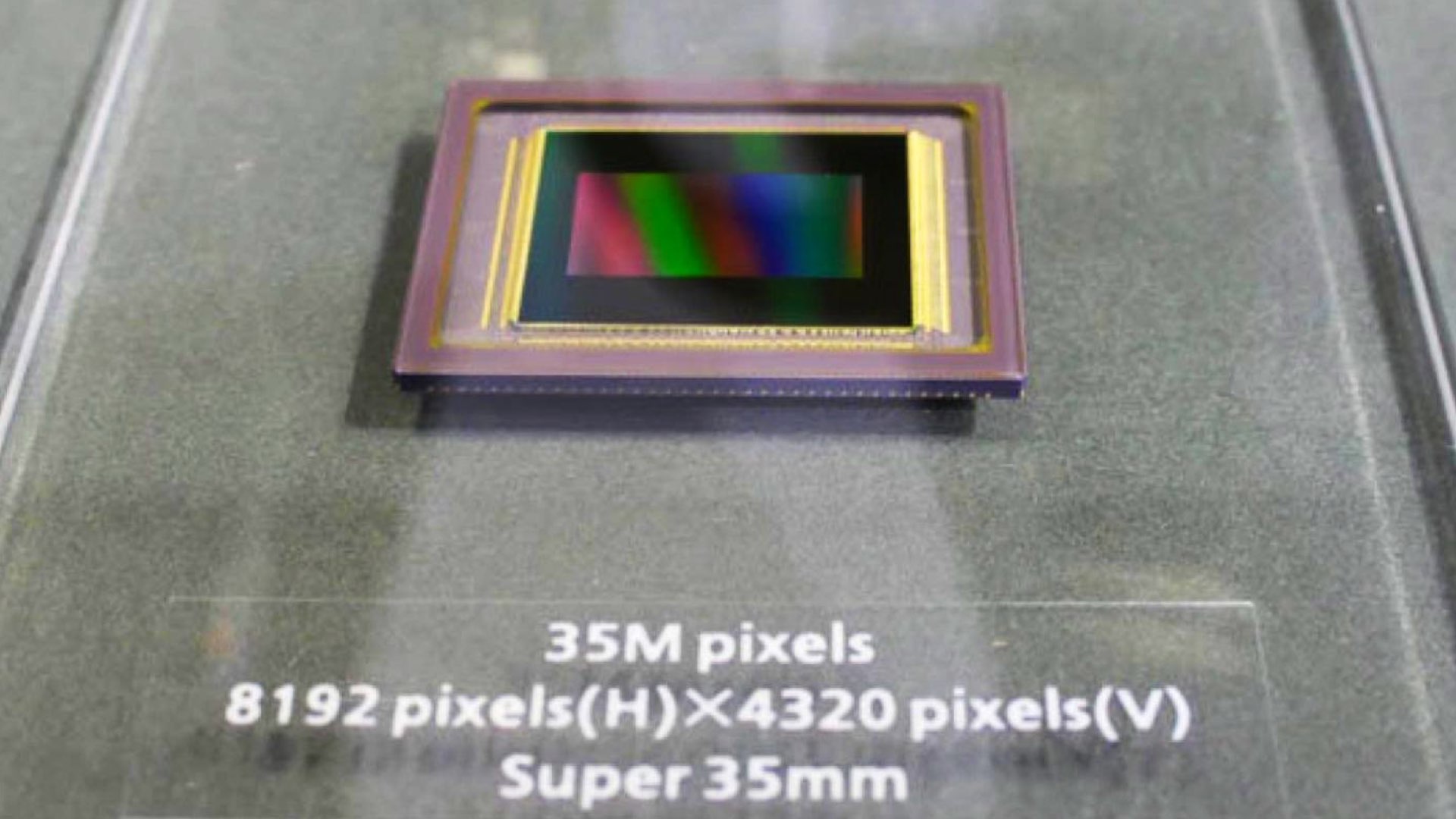
It’s all about the color separation
Panasonic claimed that conventional Bayer array-type silicon image sensors do not have sufficient color separation performance for green, red, and blue. Therefore, it has been difficult to reproduce, recognize, and judge colors accurately under light sources with peaks at specific wavelengths, such as cyan light and magenta light. However, Panasonic’s OPF CMOS image sensor has a unique structure in which the photoelectric conversion part that converts light into an electric signal is an organic thin film, and the function of storing and reading out the signal charge is performed in the circuit part, which is entirely independent of each other (Explore the image below – Figure 1).
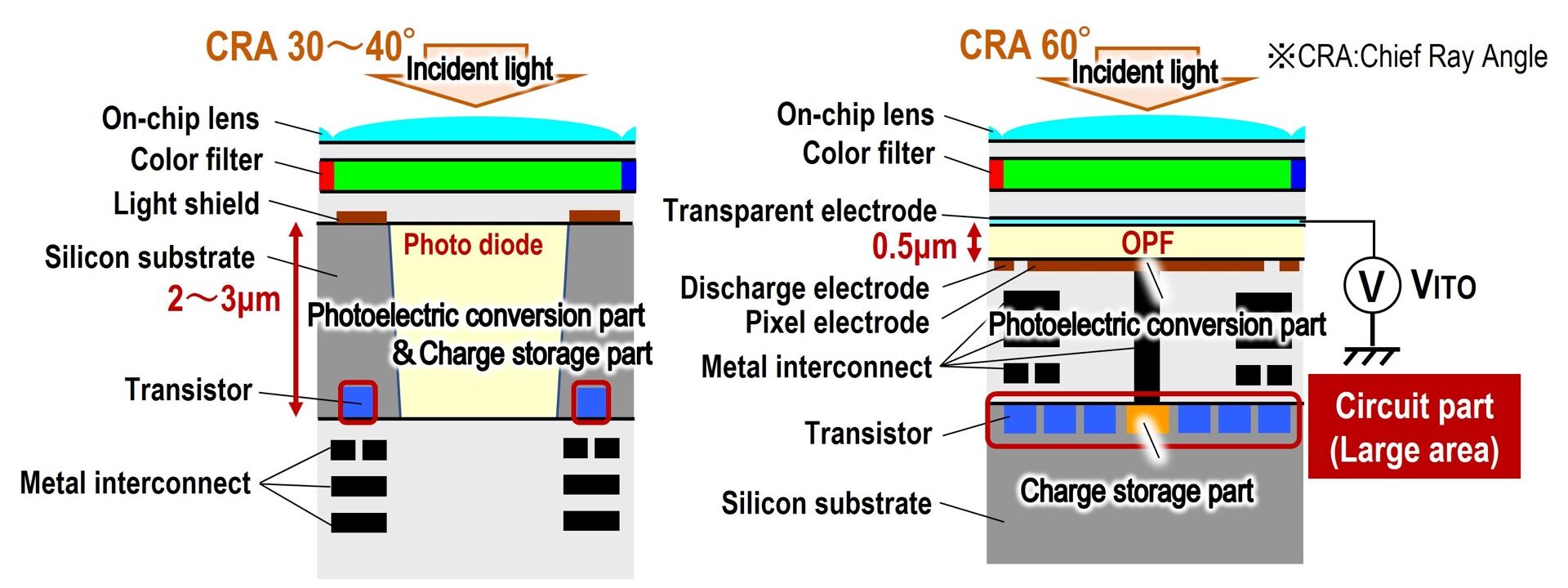
Figure 1. Comparison of pixel structure (cross-sectional image). Source: Panasonic
Accurate color reproduction regardless of the light source
As a result, unlike conventional silicon image sensors, it is possible to provide photoelectric conversion characteristics that do not depend on the physical properties of silicon. The OPF with its high light absorption rate enables the thinning of the photoelectric conversion part (Photoelectric conversion film thinning technology). By providing a discharge electrode at the pixel boundaries, the signal charge due to the incident light at the pixel boundaries is discharged, and the signal charge from adjacent pixels is suppressed (Electrical pixel isolation technology). In addition, since the under part of the OPF is covered with the pixel electrode for collecting the signal charge generated in the OPF and the electrode for discharging the charge, incident light that cannot be absorbed by the OPF does not reach the circuit side. This suppresses the transmission (Light transmission suppression structure). With the above three technologies, it is possible to suppress light and signal charges that enter adjacent pixels. As a result, color crosstalk can be reduced to an almost ideal shape, as shown in the spectral characteristics shown in Figure 2, and accurate color reproduction is achieved regardless of the color of the light source (Figure 3). In short, the organic sensor allows color accuracy by neutralizing the side effect of a light source.

Figure 2. Comparison of spectral characteristics. Source: Panasonic
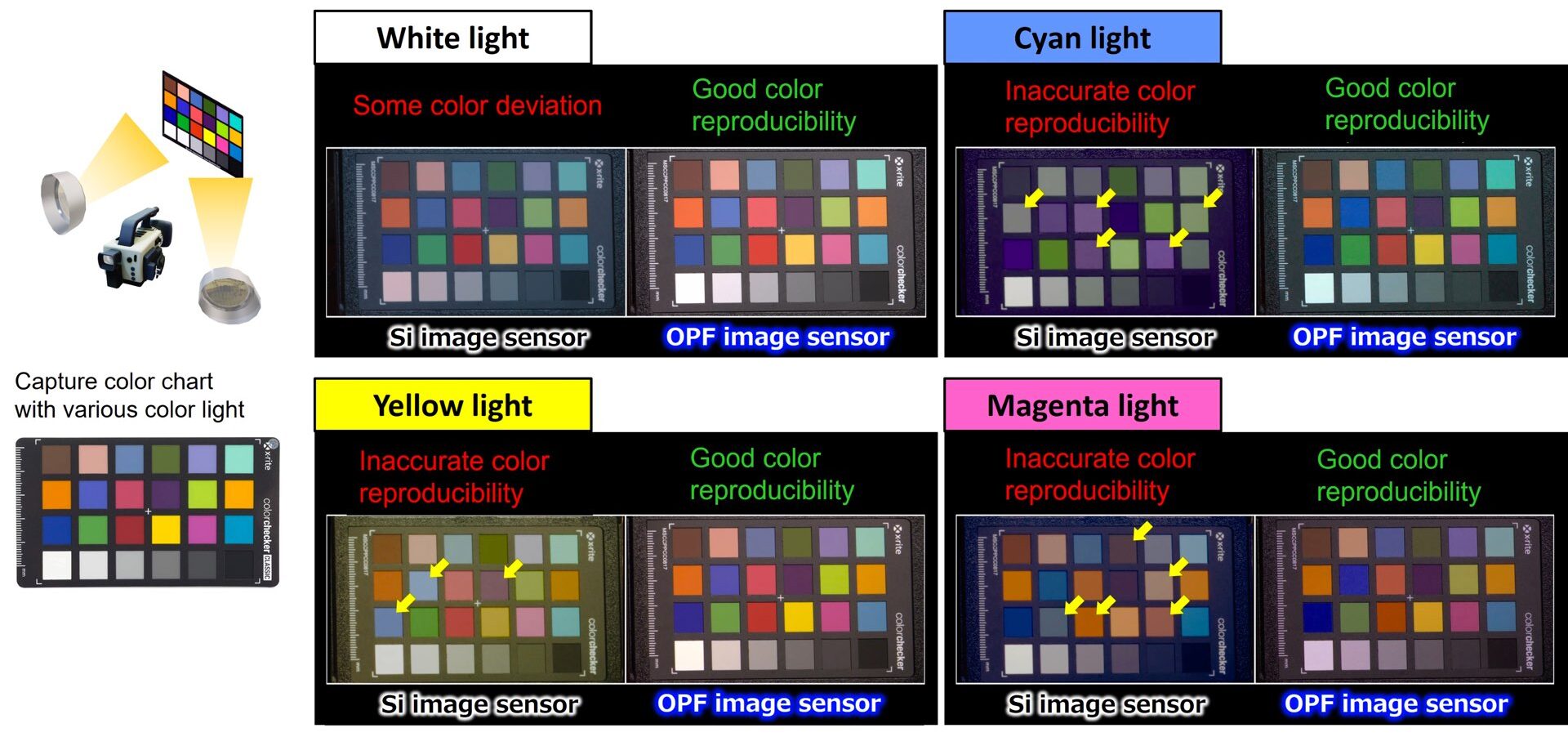
Technologies and features
Panasonic says that this development is based on the following technologies:
Photoelectric conversion film thinning technology with 10 times higher light absorption
The light absorption coefficient of the OPF that was developed this time is about 10 times higher than that of silicon (Figure 4).
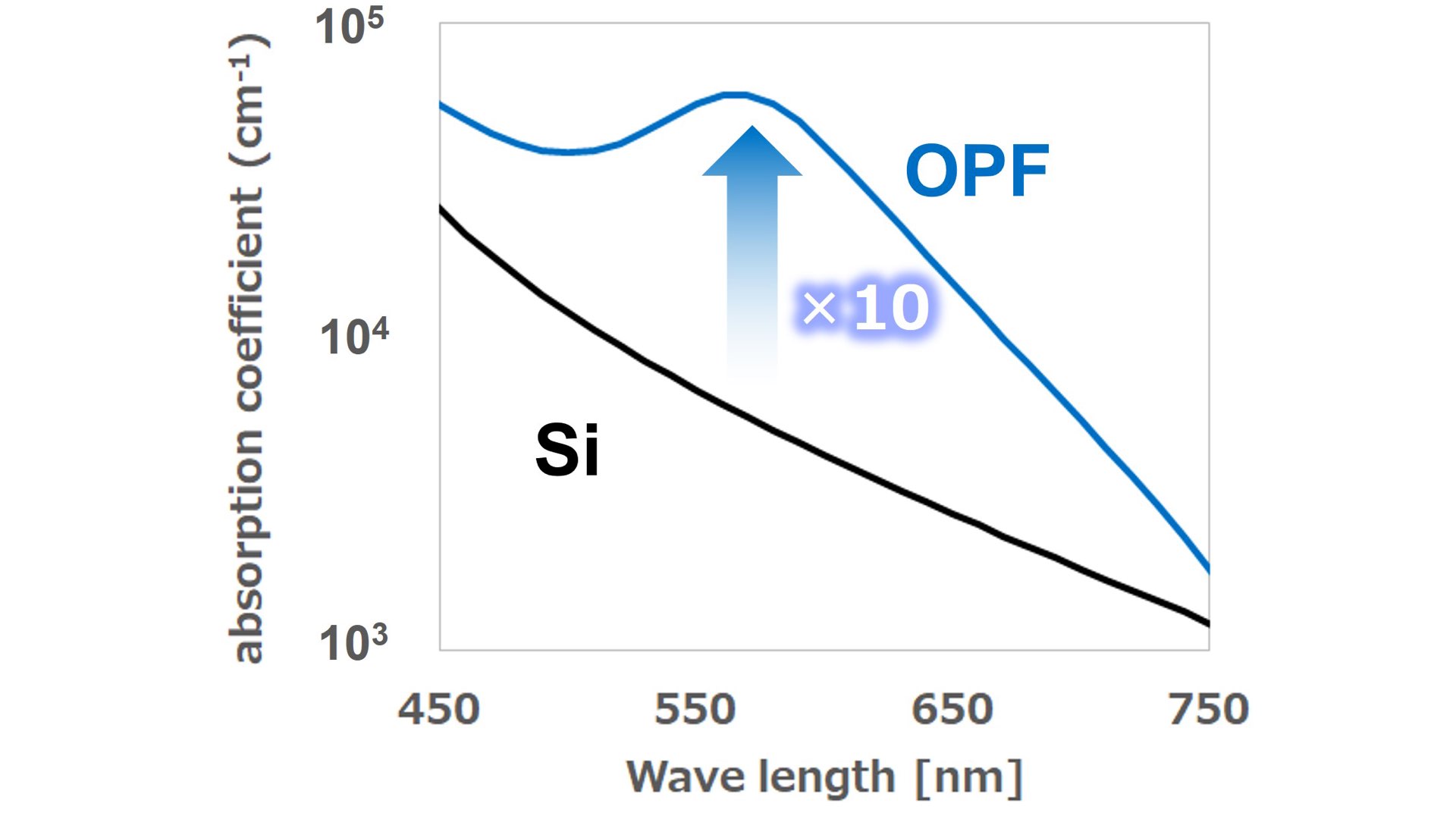
The distance required for light absorption is shortened, allowing for the OPF to be designed thinner than silicon photodiodes, and in principle, it is possible to reduce oblique incident light from adjacent pixels, which is a factor in color crosstalk (Figure 5).

Figure 5. Comparison of the effects of oblique incident light. Source: Panasonic
Electrical pixel isolation technology that discharges unnecessary charges at pixel boundaries
The charges generated at the pixel boundaries include signal charges originating from adjacent pixels due to oblique incident light, which contributes to color crosstalk and resolution degradation. In conventional silicon image sensors, a light-shielding layer is provided at the boundary between pixels to prevent oblique incident light. However, the light reflected by the light-shielding layer becomes stray light and penetrates into adjacent pixels, and is diffracted to wrap around, resulting in insufficient light-shielding. Therefore, Panasonic has developed a structure that discharges the signal charge caused by the incident light at the pixel boundaries and suppresses the intrusion of signal charge from the adjacent pixels by placing a new discharge electrode at the pixel boundaries. As shown in Figure 6, by providing a discharge electrode, the charge generated at the pixel boundaries is discharged, allowing for image quality deterioration to be suppressed.
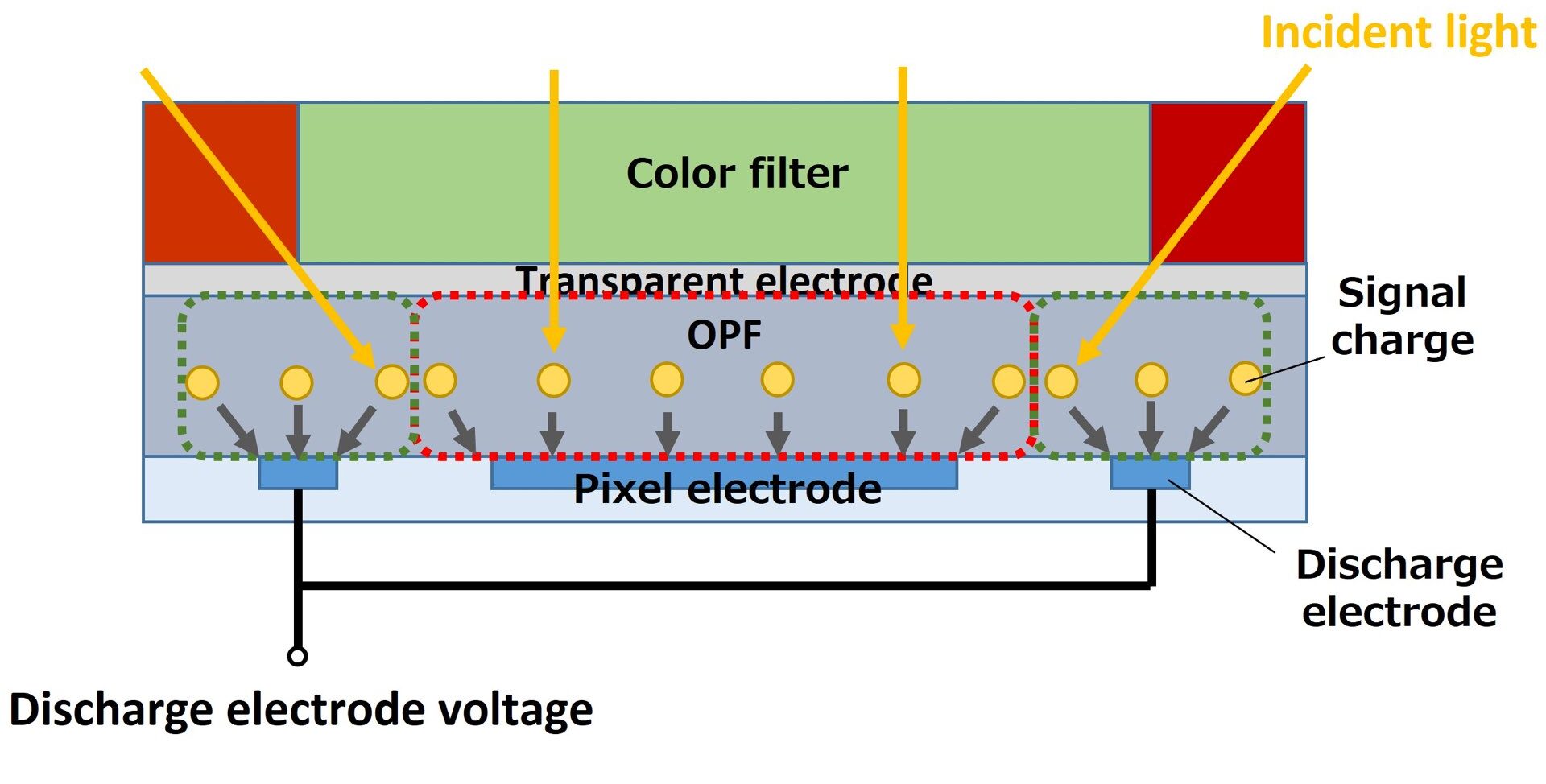
Light transmission suppression structure that suppresses the transmission of light through the photoelectric conversion part
Light incident on the photoelectric converter (photodiode in silicon image sensors, OPF in OPF CMOS image sensors) is photoelectrically converted into signal charges. However, part of the light is not photoelectrically converted and passes through, contributing to color crosstalk. Red light, which has a longer wavelength and lower energy compared to other light, is easier to penetrate and has greater crosstalk. As shown in Figure 7, a silicon image sensor transmits approximately 20% of light with a wavelength of 600 nm, while an OPF CMOS image sensor transmits only 1% of light with the same wavelength.
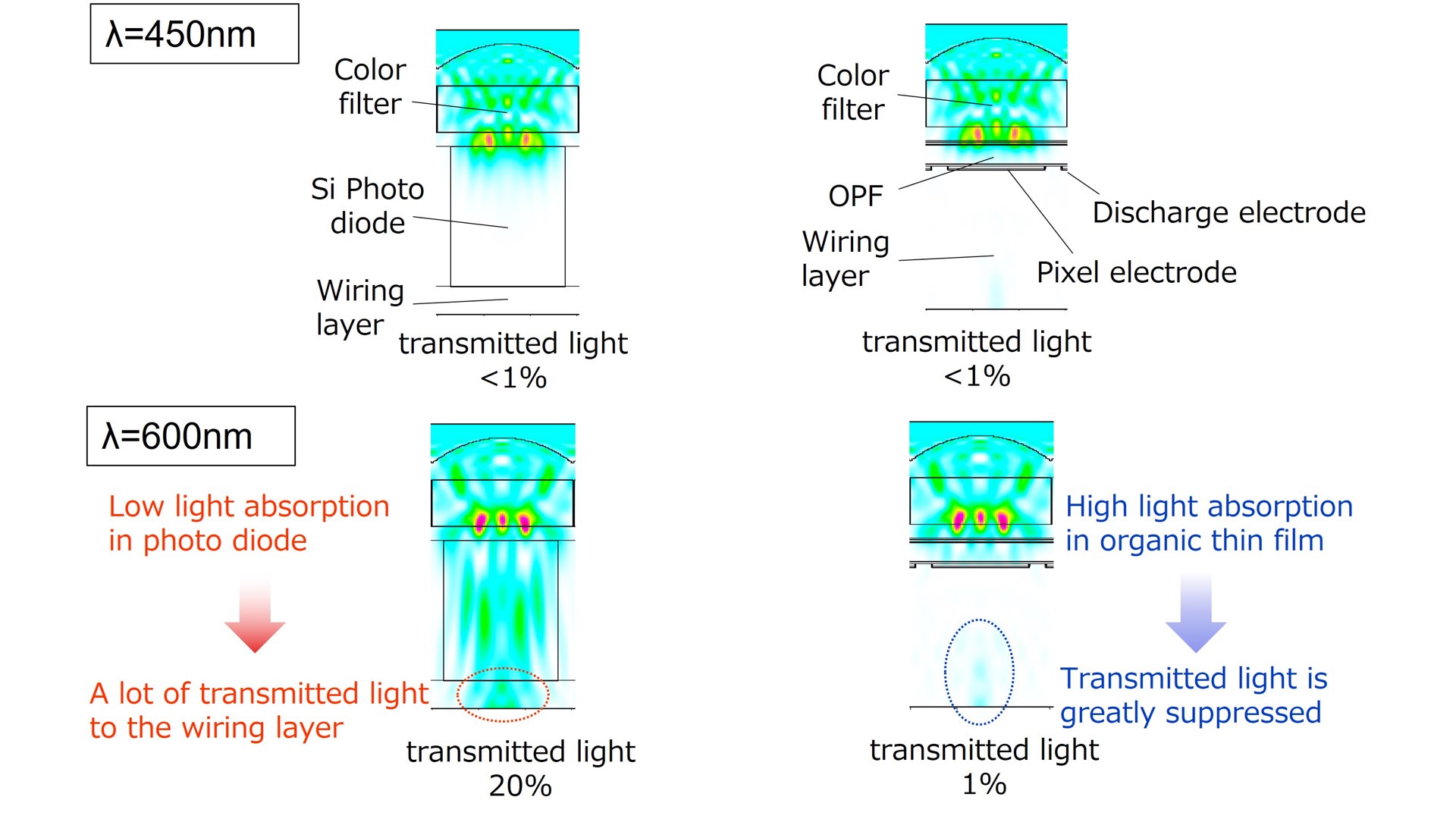
The bottom of the OPF is covered with a pixel electrode for collecting signal charges and an electrode for discharging charges. Therefore, incident light that cannot be completely absorbed by the OPF is absorbed or reflected by the electrode, and the reflected light is again absorbed by the OPF. Furthermore, since the space between the pixel electrode and the discharge electrode is very small, it is difficult for light to pass through the lower part of the OPF. As a result, OPF CMOS image sensors are structurally very tolerant of color crosstalk.
In the future
Panasonic states that, in the future, it will propose these OPF CMOS image sensor technologies for various applications such as commercial broadcasting cameras, surveillance cameras, industrial inspection cameras, and automotive cameras. Panasonic says it will also contribute to highly robust imaging systems that are highly tolerant of changes in light source type, illuminance, and speed (Figure 8).
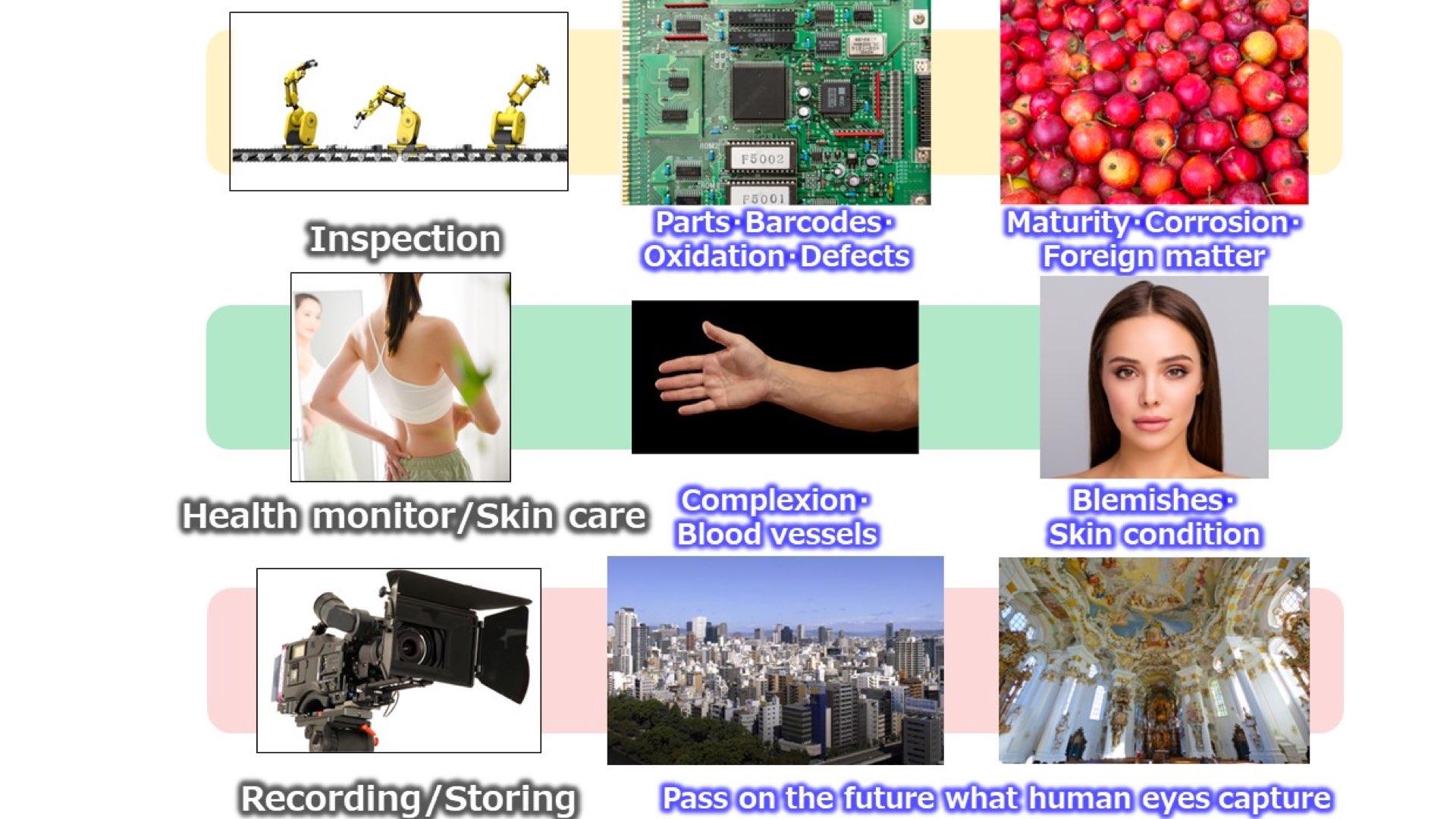
Wrapping up
To make the story short (and simple), this organic CMOS technology will allow high color reproduction accuracy, even under challenging lighting environments. Although initially, we talked about 8K and S35 sensors, in this very detailed press release, Panasonic doesn’t mention the resolution or sensor size. Furthermore, Panasonic hasn’t confirmed this sensor to be implemented in cinema cameras. Nevertheless, it’s obvious that this technology will be very relevant to our industry as well. Let’s wait for some sample footage to explore how this technology can be utilized by, and for, cinematographers.

Post Game Questions
- Do you think the OPF tech will be implemented in cinema cameras?
- Will we be seeing an ultra-high-resolution full-frame CMOS organic sensor?
Support Y.M.Cinema Magazine by purchasing our one-of-a-kind stainless steel model of 65 motion picture film camera – A perfect gift for filmmakers.







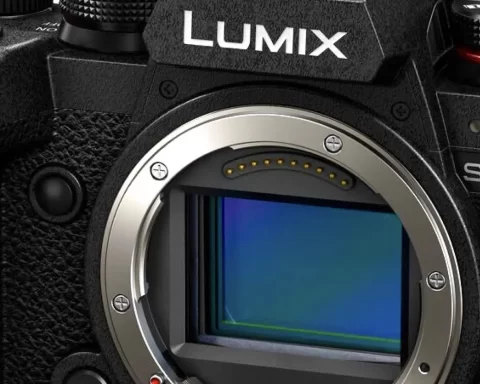


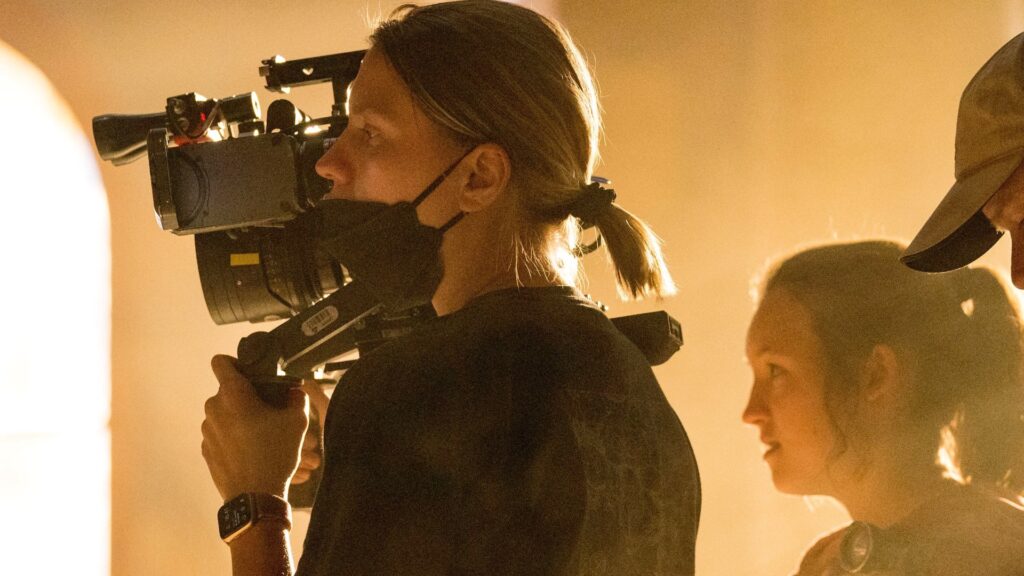







Put this new Panasonic sensor into a Box Style Cinema Camera, you’ll achieve all your sales goals (consumer and professional)!
I love the fact that they have been grinding away on this technology for NINE YEARS.
If the technology proves a significant advancement and not prohibitively expensive, maybe Blackmagic could us it in a future model.
Uhm the goal is not “Accurate” colors. Film was hardly accurate – it had a painterly feel for the colors.
Panasonic does not mention the power draw of this chip. Im told by a sensor industry insider that this chip requires high amounts of power to drive it. He also told me that it produces an enormous amount of heat compared to conventional CMOS sensors. This chip will likely appear in large studio cameras with large power supplies and large active cooling systems. Dont expect this is a small, battery powered camera for a long time….if ever. Im told that power and heat have been one of the biggest technological roadblocks of this project.